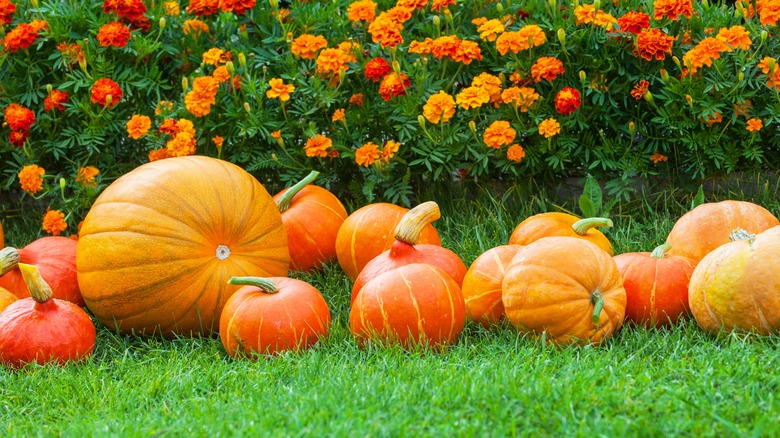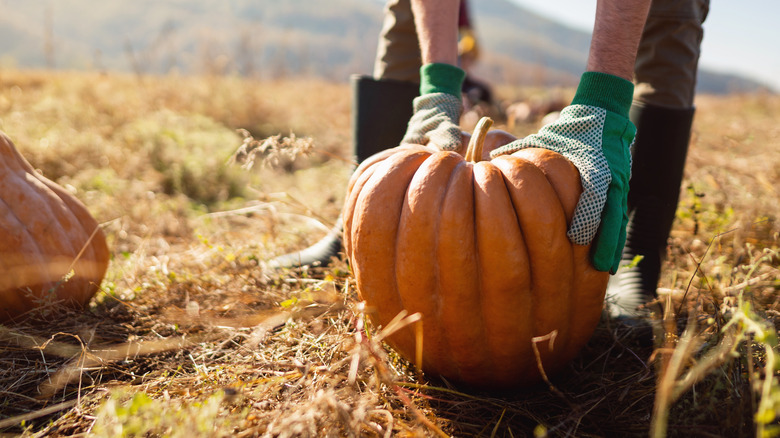The Gardening Rule You Might Not Know That Is Hurting Your Pumpkins
Growing pumpkins is an exciting endeavor, as the long, tangling vines add a whimsical effect to a garden. Plus, the prospect of harvesting carveable or decorative pumpkins for the fall adds a touch of splendor and anticipation. If it's your first time planting pumpkins in your garden, full steam ahead! If you planted pumpkins last year, though, there's an important tip about crop rotation you should keep in mind. This keeps your pumpkins as healthy as possible and increases the likelihood of a bountiful harvest.
Gardeners should avoid planting pumpkins in the same space for consecutive years for a few reasons. First, all pumpkin varieties, like many other crops, deplete the soil of specific nutrients essential for their growth. When grown in the same area year after year, they consume these nutrients faster than they can naturally replenish them, resulting in soil exhaustion. This can lead to stunted growth, poor fruit development, and increased susceptibility to pests and diseases.
Secondly, planting pumpkins in the same spot invites a higher risk of disease buildup in the soil. Fungal, bacterial, and viral pathogens can accumulate when the same crop is cultivated repeatedly. This encourages disease transmission and could devastate your pumpkin crop. Finally, crop rotation helps break the life cycles of soil-borne pests and can reduce the need for chemical pesticides, promoting healthier, more sustainable agriculture. By rotating your vegetable garden crops, like legumes or grains, with pumpkins, you can disrupt the pests' natural habitat and reduce the risk of infestation.
Other gardening tips for growing pumpkins
Aside from rotating pumpkins in the garden each year, there are a number of other contributing factors that pumpkins require in order to thrive. Pumpkins enjoy full sun, so ensure your garden receives at least six to eight hours of direct sunlight each day. Proper sun exposure encourages vigorous growth, better fruit development, and higher yields. Choose a sunny location in your garden for planting your pumpkin vines.
Additionally, well-draining, nutrient-rich soil is essential for pumpkin cultivation. Start by amending the soil with organic matter, such as compost, to improve its texture and fertility. Pumpkins prefer slightly acidic to neutral soil. Moreover, pumpkins are heavy feeders and benefit from regular fertilization. Before planting, incorporate a balanced, slow-release fertilizer into the soil to provide essential nutrients. Consistent and adequate watering is crucial for pumpkins. Keep the soil consistently moist but not waterlogged. Use a soaker hose or drip irrigation system to provide water at the base of the plants, which helps prevent fungal diseases by keeping the leaves dry. Avoid overhead watering for this reason.
Regularly prune the pumpkin vines to encourage air circulation and reduce the risk of disease. Also, thin the fruit to promote larger, healthier pumpkins. Leave only one or two fruits per vine to focus the plant's energy on those pumpkins. Finally, consider providing support for your vines by using trellises for the growing pumpkins. This prevents them from sitting directly on the ground, reducing the risk of rot and damage.

